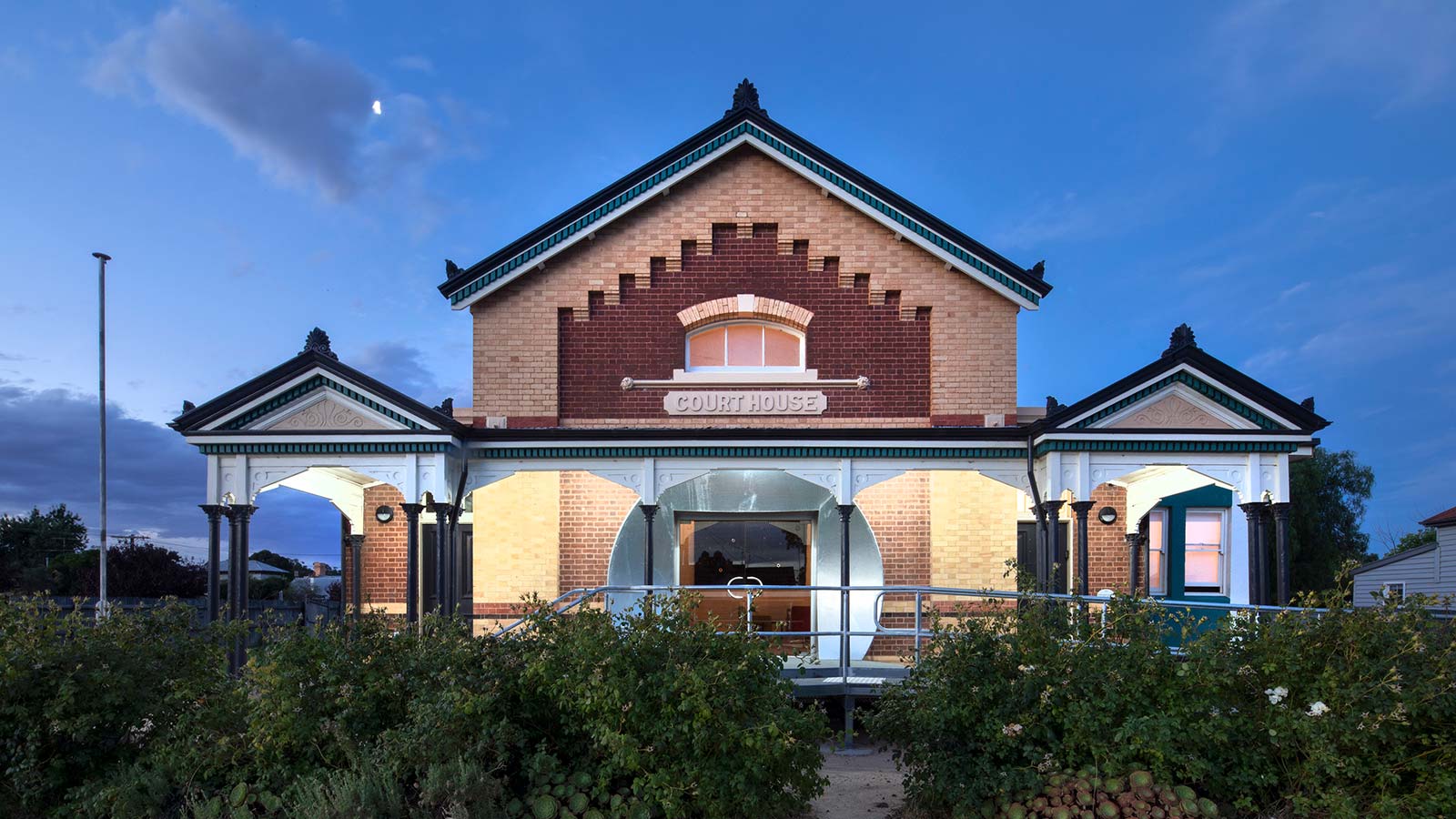The Warracknabeal Courthouse Reactivation is breathing life back into the historic 1890 building, creating an arts hub that will be a drawcard for community and visitors alike.
It was funded by $500,000 from the Tourism Infrastructure Program, plus $248,000 from the Regional Infrastructure Fund, and delivered in partnership with Yarriambiack Shire Council.
Planning has been underway for many years. With the historic building in need of repair, Working Heritage was appointed by the Victorian Government in 2013 to manage the building. At the time, it hadn’t been used regularly since 1989.

Warracknabeal’s transformed courthouse. Credit: Rebecca Selleck
Collaborative effort
Partnering with Monash Art, Design & Architecture (MADA) and Creative Victoria, Working Heritage hatched a plan to transform the town into an arts hub, with the courthouse at its heart.
Between 2019 and 2021, the building was transformed into an art studio, exhibition space, accommodation, and community facilities.
The second stage of the transformation will include the installation of a unique accommodation capsule, following a successful trial of an Artist in Residence program.
The Airstream-style ‘Wonder Cabinette’ is a prefabricated aluminium capsule which will form part of an atrium space at the back of the building.
The portable house on wheels will host three artist residencies in neighbouring Wimmera towns. Artists will develop virtual reality content which can be shared back to the courthouse.
New life for historic building
Yarriambiack Shire Council CEO Tammy Smith said it’s exciting to see the innovative project breathing life back into the town’s historic courthouse.
“Our diverse range of art, culture and tourism attractions can be enjoyed by visitors and residents alike while contributing to the local economy,” she said.
“The rural arts and culture scene has transformed from a hidden local activity to something people will travel to participate in and experience.”
Working Heritage Executive Officer Ross Turnbull explained the team from MADA and Working Heritage worked with the local community to trial the arts program. The program had two aims: to attract new people to the town of 2,500 residents and create an immersive art experience for the community.
“The program allows the historic property to be enjoyed and valued by the local community and those from further afield,” Ross said.
As part of the trial, Canberra-based photographer James Tylor spent four weeks on site and travelling around Wimmera Mallee researching the region for his work.
“After the pilot phase, we now know the courthouse itself is a fantastic accommodation location and we can refine and build specialist studio artist facilities,” Ross said.
James described the building as a beautiful place to live.
“I really enjoyed my stay in Warracknabeal, the people in the town were very friendly and inviting,” he said.
“I spent most of my time driving around the Wimmera region taking photographs of the places I visited.
“I think the Warracknabeal community will get a lot from the artists visiting the town and in turn, the artists will get a lot from their time in Warracknabeal and their engagement with the local community.”
Boost for Silo Art Trail
Yarriambiack Shire Council’s Community and Economic Development Manager Marianne Ferguson considers the courthouse another attraction on the Silo Art Trail.
“The silo art trail has highlighted we can do arts and culture well,” Marianne said, explaining the transformed courthouse lends itself well to the Artist in Residence program.
“The artists need gallery and studio space, they need the right facilities to be messy or to lay out their work,” she explained. “These spaces allow artists to invite the community in to see their work.”
“Visiting artists also need to sleep somewhere, so having accommodation at the courthouse is really important. The new accommodation provides an opportunity for visitors to stay somewhere really unique.”
We acknowledge the Traditional Owners of the land where the Warracknabeal Courthouse is located, the Wotjobaluk, Jaadwa, Jadawadjali, Wergaia and Jupagalk Nations.


